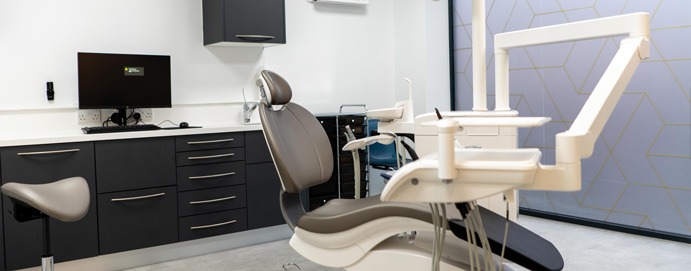When planning a dental clinic, the importance of an efficient and practical equipment layout cannot be overstated. Whether you are designing a new clinic or renovating an existing one, the layout of your equipment plays a critical role in the day-to-day functionality and patient experience. A well-organised dental clinic not only optimises workflows but also ensures comfort for both patients and dental professionals. In this blog, we’ll explore the essential considerations that contribute to the success of dental clinic design, with a focus on the strategic placement of equipment and how it impacts overall operations.
The Importance of Effective Equipment Layout
When it comes to dental clinics, the placement of equipment can significantly affect how smoothly operations run. A poorly organised space can lead to inefficiency, creating unnecessary delays and frustrations for both patients and staff. On the other hand, a well-planned layout promotes an environment where staff can work efficiently, and patients can experience minimal stress.

Image Sources : Divo Interiors LTD UK
An effective layout optimises the available space and improves the workflow, making it easier for dental surgery contractors to execute treatments seamlessly. In fact, a strategic layout can also enhance hygiene standards, reduce the risk of cross-contamination, and ensure that every piece of equipment is easily accessible when needed.
Key Considerations for Dental Clinic Design
1. Workflow Efficiency
One of the primary objectives of any dental clinic design is to streamline the workflow. This involves creating a smooth flow between different areas, such as the waiting room, consultation area, treatment rooms, sterilisation areas, and staff workspaces. When designing the equipment layout, it’s essential to consider the sequence of activities that occur throughout the day.
For instance, positioning the dental equipment in a way that allows for easy access and quick transitions between tasks is crucial. The dental surgery contractors responsible for the design will typically aim to keep the workflow linear and intuitive, reducing the need for staff to move back and forth unnecessarily.
2. Ergonomics and Comfort
A well-designed clinic should take into account the ergonomic needs of both the patients and the dental professionals. For patients, the equipment layout should allow for easy movement and comfort during their visit. For dental professionals, ensuring that the equipment is within reach and positioned correctly will help minimise physical strain during procedures.
Ergonomic dental chairs that are adjustable are a must, ensuring that patients are comfortable while allowing dental professionals to perform treatments with ease. The positioning of other equipment, such as lights, suction systems, and dental instruments, should follow ergonomic principles to support long hours of work without causing fatigue.
3. Infection Control and Safety
Infection control is a significant concern in any healthcare setting, and dental clinics are no exception. The layout must ensure that equipment can be easily sanitised and that there is a clear separation between clean and contaminated zones. Sterilisation areas should be positioned away from patient care areas, and there should be designated areas for waste disposal.
In addition to infection control, the layout should also take into account the safety of both patients and staff. Equipment placement should ensure that there is sufficient space to move freely without obstruction. Fire safety and proper ventilation are also essential aspects to consider.
4. Patient Privacy and Comfort
Patients visiting a dental clinic may feel anxious, especially if they are undergoing treatments they perceive as invasive or uncomfortable. An optimal layout can help alleviate some of these anxieties by ensuring that the treatment areas are private, quiet, and well-lit. Consideration should also be given to the layout of waiting rooms, as they play a key role in making patients feel at ease before their appointment.
Effective dental clinic design incorporates elements such as soothing colours, comfortable seating, and discreet equipment placement to ensure that patients feel relaxed. Privacy screens or partitions between treatment areas can also help maintain a sense of confidentiality, which is crucial for patient satisfaction.
5. Flexibility for Future Growth
As dental practices evolve, so do the needs of the clinic. Your equipment layout should allow for flexibility and future growth. Whether it’s adding new equipment or reconfiguring the space for additional services, the design should accommodate changes without requiring a complete overhaul. This is particularly important in a field like dentistry, where technological advancements are common.

Image Sources : Divo Interiors LTD UK
Dental surgery contractors will often recommend modular design solutions that allow for easy expansion. For example, if your practice plans to add more treatment rooms in the future, the current design should allow for this addition with minimal disruption.
How to Achieve the Perfect Equipment Layout
Achieving the ideal layout for your dental clinic requires careful planning and collaboration with professionals, including dental surgery contractors and interior designers. Here are some practical tips to help you get started:
1. Prioritise Workflow
Start by mapping out the daily operations of your dental clinic. Identify the key areas—reception, waiting area, treatment rooms, and sterilisation zones—and determine the optimal flow between them. Consider the most common tasks, such as patient check-in, consultation, and treatment procedures, and ensure that the equipment is positioned in a way that supports these processes.
2. Invest in Quality, Ergonomic Equipment
Quality, ergonomic dental equipment should be a priority in your design process. This will not only improve the comfort of your patients but also minimise strain on dental professionals. Invest in adjustable dental chairs, properly positioned dental lights, and equipment that suits the height and posture of the staff. Ergonomically designed equipment will contribute to a more productive and comfortable work environment.
3. Make Use of Vertical Space
When space is limited, consider making use of vertical space to store equipment. Wall-mounted shelves, cabinets, and other storage solutions can help free up valuable floor space and keep essential tools within easy reach. Vertical storage is a clever solution, particularly in smaller clinics, allowing for a cleaner and more organised environment.
4. Ensure Clear Infection Control Procedures
Infection control should always be a top priority in dental clinic design. Ensure that equipment and supplies are stored in designated areas, and avoid cross-contamination between clean and contaminated zones. It is also essential to incorporate hand-washing stations and sterilisation equipment in easily accessible areas.
5. Plan for the Future
Lastly, it’s essential to plan for the future. Dental technology and equipment are constantly evolving, and your clinic layout should be adaptable to accommodate new innovations. Ensure that there is space for additional equipment, and consider modular designs that allow for easy expansion of your practice.
Conclusion
The layout of your dental clinic is one of the most important aspects of ensuring operational success and patient satisfaction. By carefully planning the equipment placement, optimising the flow of your clinic, and ensuring patient comfort, you can create a space that promotes efficiency, safety, and a positive experience for everyone.
If you’re planning to build or renovate your clinic, working with dental surgery contractors and experienced interior designers will help you achieve a layout that meets both your professional and patient needs. At Divo Interiors Ltd, we specialise in creating functional and beautiful dental clinic designs that support the long-term success of your practice.






